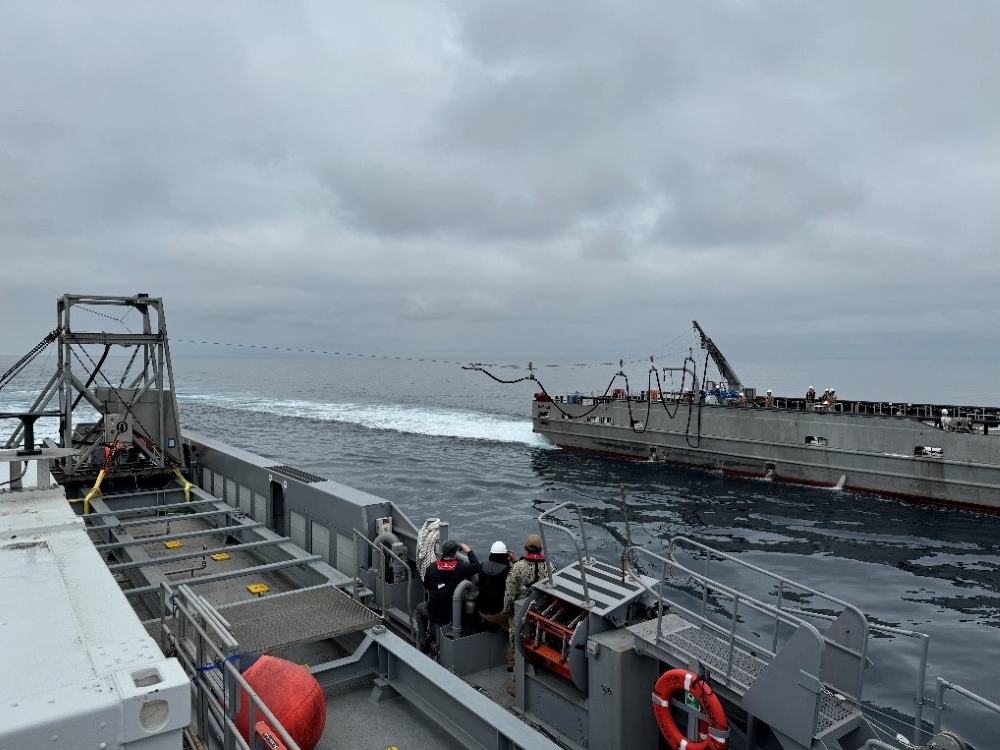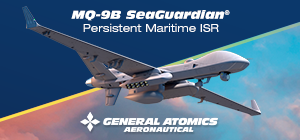
The Defense Advanced Research Projects Agency (DARPA) project NOMARS (No Manning Required Ship) has completed an historic evolution at sea when the USV MARINER deployed a refueling probe towards the USV RANGER in the first test of refueling at sea (FAS) without any human interaction required on the part of the receiving vessel.
RANGER and MARINER are both experimental vessels originally built as off-shore oil and gas support vessels for civilian use. They are operated by a small civilian crew of some 6 elements which, for the purposes of experimentation, is under instructions to intervene only when strictly necessary. The vessels are capable of fully autonomous operations in the open sea and can be controlled from a shore-based operations center or from a nearby ship.
These vessels are assigned to USV Squadron 1 (USVRON-1). This demonstration opens the way for further, future experiments that will involve the USV DEFIANT, a 180-feet, 240 tons vessel that is currently being built. Unlike previous conversions and experimental platforms of this size, DEFIANT is entirely designed with no provision, allowance, or expectation for humans on board.
DEFIANT is intended to operate autonomously for long durations at sea with no crew aboard, and is scheduled to depart for her multi-month at sea demonstration in spring 2025. For this crucial test, RANGER carried a receiving station “representative” of the one that will be installed on the DEFIANT, while MARINER carried a refueling “mini-station,” custom-designed by NOMARS prime contractor Serco Inc.
While the station has been sized and designed specifically for MARINER, the eventual aim is for the refuelling equipment and procedure to be as unchanged as possible from that used for crewed vessels. Maximum commonality in equipment and procedures is wanted to minimize the impact on personnel and systems aboard existing supply ships and oilers. The team demonstrated the entire concept of operations (CONOPS) while underway, “including passing the lead-line to the refueling side, passing and connecting the refueling probe to the USV side and pumping water”.
This was the very first test carried out at sea, on the water, and it was a complete success. As such, it marks a key step forwards towards realizing the vision of the US Navy for uncrewed large vessels serving as adjunct and “added Vertical Launch missile magazines” for crewed ships. The Navy envisions operational LUSVs as being 200 feet to 300 feet in length and having full load displacements of 1,000 tons to 2,000 tons, carrying complex combat systems and armaments of as many as 32 VLS cells. The US Navy has been working on LUSV for several years now.
Earlier in the project it had been expected that operational LUSV would begin to be acquired with the Fiscal Year 2025 budget, but this had to be delayed by 2 years. As of now, the plan is to procure the first LUSV in FY2027 at an estimated cost of $497.6 million, with 2 following in FY2028 at a combined estimated cost of $652.8 million, with another 3 in FY2029.
This year saw the completion of another important demonstration campaign, mandated by Congress in 2021, which has involved testing various diesel propulsion configurations to demonstrate their suitability to run for periods of 720 hours without human intervention. A number of teams have carried out this demanding demonstration, with the last to conclude it being Precise Power Systems, which conducted testing on behalf of Austal USA. Their experiment took place at the Daimler Trucks North America Aftermarket Solutions in Tooele, Utah, from June 19 to September 5, 2024.
The other successful teams which completed the 720 hours demo are:
- Bollinger and Carter Machinery on behalf of Caterpillar in Chesapeake, Virginia, using the 1550 kw Caterpillar 3512C model engine.
- Fincantieri Marinette Marine (FMM) and Carter Machinery on behalf of Caterpillar in Chesapeake, VA, with the Caterpillar 2300 kW rated 3516 main propulsion diesel, lube oil and fuel system.
- Gibbs & Cox and Southwest Research Institute in San Antonio, Texas on behalf of Cummins, with the QSK95 diesel engine paired with an ABB AMG 0560M04 LAE generator.
- Huntington Ingalls Incorporated (HII), in partnership with the U.S. Coast Guard, on behalf of MTU, concluded the tests using the MTU 20V 4000 M93L.
- L3 Harris, on behalf of Cummins, validated the reliability of the QSK60 diesel engine, a Main Propulsion Diesel Engine configuration, and the QSM11, a Marine Diesel Generator Set in Camden, New Jersey.








.png)
